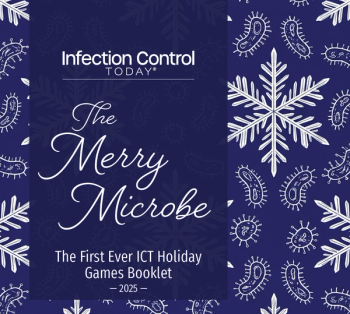
- Infection Control Today, January/February 2022, (Vol. 26, No. 1)
- Volume 26
- Issue 1
COVID-19 Vaccine Uptake Among Health Care Workers Hits Wall
Health care professionals were getting vaccinated at a steady clip. Then came the drop-off. Now, only about 70% are fully vaccinated. Infection preventionists to the rescue?
In what’s being touted as the most comprehensive examination of the problem of vaccine hesitancy among health care professionals (HCPs), investigators with the Centers for Disease Control and Prevention (CDC) COVID-19 Rapid Response Team collected data from 2086 health care facilities and their approximately 3.3 million HCPs.1 Vaccine uptake among this population seemed to be going well, rising from 36% to 60% between January 2021 (when the rollout began with a somewhat bumpy start) and April 2021 (after the initial rollout problems were fixed).
And then came the slowdown.2
The study, which was published in the December issue of the American Journal of Infection Control (AJIC), states that “as of September 15, 2021, among 3,357,348 HCP in 2086 hospitals included in this analysis, 70% were fully vaccinated. Additional efforts are needed to improve COVID-19 vaccine coverage among HCPs.”
In any effort to increase HCP vaccine uptake,3 infection preventionists (IPs) will most likely play a major role.4 IPs often take the lead in vaccination efforts in hospitals and other health care settings—not only for COVID-19, but also for influenza.5
Hannah Reses, MPH, lead author of the study, said in a news release that “our analysis revealed that vaccine coverage among US hospital-based HCPs stalled significantly after initial uptake. Additional efforts are needed now to improve HCP vaccine coverage and reduce the risk of SARS-CoV-2 transmission to patients and other hospital staff.”6
Ann Marie Pettis, BSN, RN, CIC, FAPIC, president of the Association for Professionals in Infection Control and Epidemiology, underscored the crucial role of IPs in these efforts.
“Hospital-based HCP play a critical role in influencing community uptake of vaccines and are also at increased risk of both acquiring and transmitting COVID-19 in health care settings,” Pettis said. She added that “the findings from this analysis suggest that vaccine mandates as well as investment in additional educational and promotional activities could help increase vaccine coverage among HCPs to better protect public health.”
But vaccine mandates must be handled with care. As Infection Control Today® reported in its October issue, there are ethical and practical considerations.7 Mandates might force the resignation or firing of HCPs at a time when there’s already a critical shortage.8,9
CDC investigators looked at HCP vaccine uptake at children’s hospitals, short-term acute care hospitals, long-term acute care hospitals, and critical access hospitals.
Vaccine uptake for HCPs was highest at children’s hospitals (95% CI, 75.8%-77.3%), followed by short-term acute care hospitals (95% CI, 70.1%-70.2%) long-term acute care hospitals (95% CI, 68.2%-69.3%) and critical access hospitals (95% CI, 63.8%-64.3%). Uptake was highest in health care facilities in metropolitan counties (95% CI, 70.9%-71.0%), followed by rural counties (95% CI, 64.8%-65.3%), and nonmetropolitan urban counties (95% CI, 63.1%-63.5%).
“HCPs who did not want to be vaccinated often reported low trust in regulatory authorities and the government; notably, trust in information received from medical professionals was higher, suggesting an important role of professional societies and medical organizations in enhancing vaccine uptake among HCPs and combating misinformation that might impact uptake,” the authors wrote.
Results of another study published recently in AJIC showed that peer education was 1 of the methods used in a large hospital system to bring HCP vaccination rates up to 90%.10 In that study, investigators with Narayana Health in Bengaluru, India, used role models. First in line to get vaccinated were senior physicians and health care facilities administrators.
The CDC study noted that the ramifications of strong COVID-19 vaccine uptake among HCPs can extend far beyond the walls of a hospital.
“HCPs play a critical role in advising patients and communities and influencing vaccine decisions,” the authors wrote. “Several studies have found that vaccinated HCPs were more likely to recommend vaccination to patients, friends, and family, suggesting that broader uptake of the COVID-19 vaccine among HCPs might lead to improved coverage in the general population.
HCPs are also at increased risk for acquiring and transmitting COVID-19 in health care settings.”
References:
- COVID-19 rapid response team guidance. CDC. Updated March 1, 2021. Accessed December 9, 2021. https://www.cdc.gov/coronavirus/2019-ncov/global-covid-19/rtt-management-introduction.html
- Kavanagh K. As vaccine rollout stalls, move monoclonal antibodies into COVID fight. Infection Control Today®. January 17, 2021. Accessed December 9, 2021. https://www.infectioncontroltoday.com/view/as-vaccine-rollout-stalls-move-monoclonal-antibodies-into-covid-fight
- Bisht A. How infection preventionists will handle COVID-19 vaccinations. Infection Control Today®. February 19, 2021. Accessed December 9, 2021.
https://www.infectioncontroltoday.com/view/how-infection-preventionists-will-handle-covid-19-vaccinations - Diamond F. Q&A: battling vaccine hesitancy among health care workers. Infection Control Today®. February 17, 2021. Accessed December 9, 2021. https://www.infectioncontroltoday.com/view/q-a-battling-vaccine-hesitancy-among-health-care-workers
- Diamond F. Infection preventionist leads flu vaccination effort. Infection Control Today®. October 12, 2020. Accessed December 9, 2021. https://www.infectioncontroltoday.com/view/infection-preventionist-leads-flu-vaccination-effort
- Most comprehensive analysis to date reveals 30% of healthcare personnel in U.S. hospitals remain unvaccinated against COVID-19. News release. Association for Professionals in Infection Control and Epidemiology. November 18, 2021. Accessed December 9, 2021. https://apic.org/news/most-comprehensive-analysis-to-date-reveals-30-of-healthcare-personnel-in-u-s-hospitals-remain-unvaccinated-against-covid-19/
- Ricci MJ, Amorim F. Ethical and practical considerations surrounding mandatory vaccination. Infection Control Today®. August 27, 2021. Accessed December 9, 2021. https://www.infectioncontroltoday.com/view/ethical-and-practical-considerations-surrounding-mandatory-vaccination
- Diamond F. 153 hospital employees resign, fired over COVID-19 vaccine mandate. Infection Control Today®. June 24, 2021. Accessed December 9, 2021. https://www.infectioncontroltoday.com/view/153-hospital-employees-resign-fired-over-covid-19-vaccine-mandate
- Diamond F. Despite billions in aid, nursing homes losing employees in droves. Infection Control Today®. May 10, 2021. Accessed December 9, 2021. https://www.infectioncontroltoday.com/view/despite-billions-in-aid-nursing-homes-losing-employees-in-droves
- Narayan P, Ts SK, Bv MM, Ghorai PA, Rupert E, Shetty DP. Uptake and impact of vaccination against COVID-19 among healthcare workers-evidence from a multicentre study. Am J Infect Control. Published online November 12, 2021. doi:10.1016/j.ajic.2021.10.036
Articles in this issue
almost 4 years ago
Add Biopreparedness to IP Checklistalmost 4 years ago
Infection Control in Dentistry Before, During, and After COVID-19about 4 years ago
Brushing Up on Sterile Processing in Dentistryabout 4 years ago
Changes COVID-19 Brought to Long-Term Care Facilitiesabout 4 years ago
Some Cleaning Methods May Contaminate Health Care Workers and PPEabout 4 years ago
Going Deep: Cleaning Potential of Electrostatic Sprayersabout 4 years ago
Omicron More Likely Than Delta to Cause COVID-19 Reinfectionabout 4 years ago
Immune Changes in Mothers, Infants Linked to COVID-19 Infectionabout 4 years ago
COVID-19 Spread: Droplets or Particles? It’s Not an Either/OrNewsletter
Stay prepared and protected with Infection Control Today's newsletter, delivering essential updates, best practices, and expert insights for infection preventionists.






